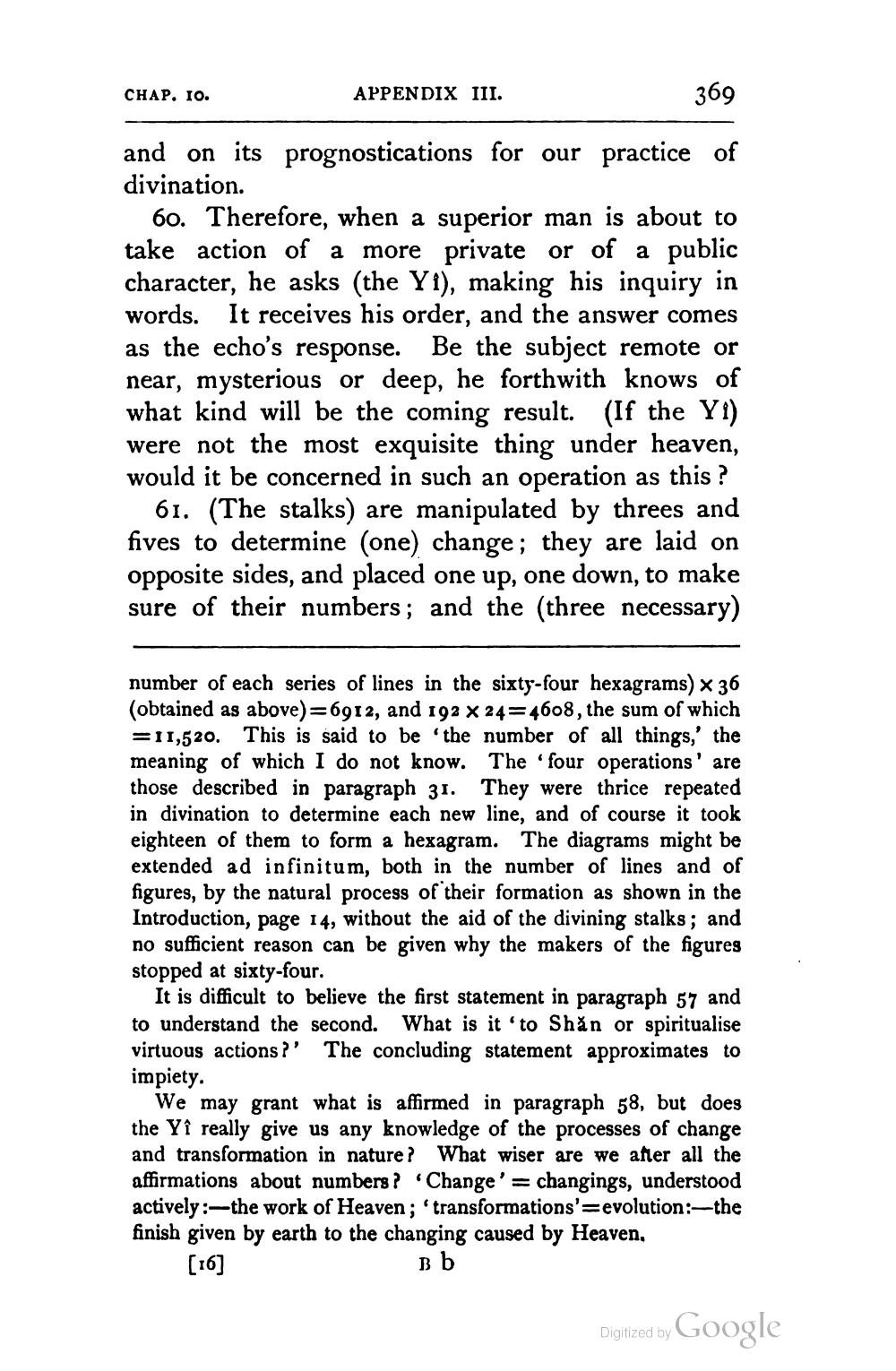________________
369
and on its prognostications for our practice of divination.
CHAP. IO.
APPENDIX III.
60. Therefore, when a superior man is about to take action of a more private or of a public character, he asks (the Yi), making his inquiry in words. It receives his order, and the answer comes as the echo's response. Be the subject remote or near, mysterious or deep, he forthwith knows of what kind will be the coming result. (If the Yi) were not the most exquisite thing under heaven, would it be concerned in such an operation as this?
61. (The stalks) are manipulated by threes and fives to determine (one) change; they are laid on opposite sides, and placed one up, one down, to make sure of their numbers; and the (three necessary)
number of each series of lines in the sixty-four hexagrams) x 36 (obtained as above)=6912, and 192 x 24=4608, the sum of which =11,520. This is said to be 'the number of all things,' the meaning of which I do not know. The four operations' are those described in paragraph 31. They were thrice repeated in divination to determine each new line, and of course it took eighteen of them to form a hexagram. The diagrams might be extended ad infinitum, both in the number of lines and of figures, by the natural process of their formation as shown in the Introduction, page 14, without the aid of the divining stalks; and no sufficient reason can be given why the makers of the figures stopped at sixty-four.
It is difficult to believe the first statement in paragraph 57 and to understand the second. What is it to Shăn or spiritualise virtuous actions?' The concluding statement approximates to impiety.
We may grant what is affirmed in paragraph 58, but does the Yî really give us any knowledge of the processes of change and transformation in nature? What wiser are we after all the affirmations about numbers? 'Change' = changings, understood actively:-the work of Heaven; 'transformations' evolution:-the finish given by earth to the changing caused by Heaven,
[16]
Bb
Digitized by Google




